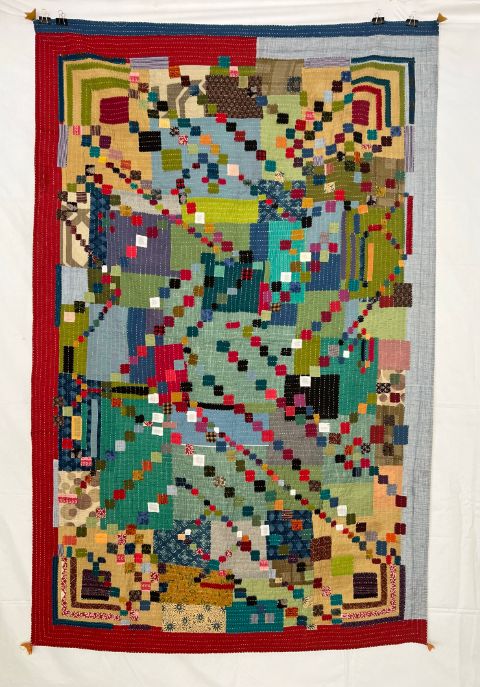Hattarabi Maulasab Gunjavati
Textile makers from the Siddi community

Photo: Anitha N Reddy
The Siddi communities across the western coast of India trace their origins from the eastern regions of the African continent, arriving eastwards over the past millennium at various times and in various circumstances: as merchants on the Somali-Indian coastal trade routes (superseded in later centuries by the Swahili-Indian route), as sailors, mercenaries, aristocrats, and as people who were enslaved. The Siddi legacy in India includes royal houses of Bengal, Ahmadnagar, or Janjira, among many other political and military figures. Several Siddi communities thrive today in India, having established casteless and more egalitarian societies than the surrounding mainstream social structures in the country. Women from Siddi communities have developed a quilting textile practice, one that is continuously evolving and morphing, ever refining a stunning language of vibrant abstraction part of no other art historical genealogy. While the pieces are reminiscent of several quilting practices and artists from different Afro-diasporic communities in the Americas, the Siddi quilts are artistic languages developed locally, with various aesthetic and protective strategies, such as the patterns at the corners of the quilt that are meant to function as amulets and forms of ensuring safety.
Work in the exhibition: Untitled (2023), textile, hand-stitched siddi kavand (African-Indian quilt) with embroidery, 229 × 280 cm
Quilts by Bastin Santan Diggekar, Shakirambi Ganishab Tattongi, Bibijan Babushab Gunjavathi, Badimabi Gafarsab Ugrani, and Saidambi Imamasab Naik on display in the Mrinalini Mukherjee Hall.